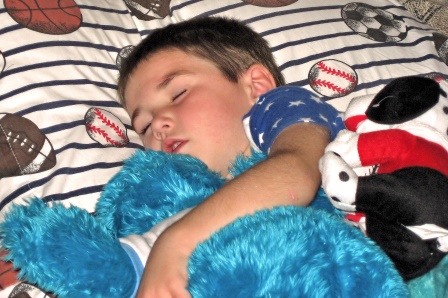
Explaining the importance of sleep to preschoolers can be quite challenging. As a teacher or parent, going against their impulse to play with friends or toys instead of napping in the afternoon or going to bed early at night can result to tantrums and scolding. Since they’re still incapable of understanding its role for their wellness and growth, you can consider the following tips as part of your magical sleep guide.

Why Sleep?
Explain the role of sleep in the language they know. You can use a storybook, some pictures, a puppet play or anything that will help you explain the following:
- A sleepy student finds it difficult to remember what the teacher says. He dozes off in class and misses the lessons. He feels too tired to play at the playground with the other kids.
- Sleep is important for gaining weight and growing tall. The brain needs to rest, the heart has to beat regularly and the body has to fight against sickness by having enough sleep.
- A child can get into trouble with his playmates as sleep deprivation affects mood. He gets easily irritated when he doesn’t get what he wants. Sleep simply makes him feels great.
- Lack of sleep can cause accidents and serious errors. A bus driver might meet an accident on the road or a cashier might make mistakes in counting out changes.
How Many Hours?
Count the number of hours an average person needs for sleeping. You can have a wall clock as your prop for this discussion. As you move the short hand in front of the class, let the students count from 1 to 8, with each number equivalent to an hour of sleep.
You can also explain that the younger a person is, the more sleep he needs. Ask someone to take the role of a two-month old baby and let him lie down and close his eyes in front of the class until he hears the number 18. Ask another student to act out as a mother and let her do the same until they hear the word 7 or 8. Here’s a table of average sleep needs from www.helpguide.org.
| Average Need Sleeps | |
| Age | Hours |
| Newborns (0-2 months) | 12 – 18 |
| Infants (3 months to 1 year) | 14 – 15 |
| Toddlers (1 to 3 years) | 12 – 14 |
| Preschoolers (3 to 5 years) | 11 – 13 |
| School-aged children (5 to 12 years) | 10 – 11 |
| Teens and preteens (12 to 18 years) | 8.5 – 10 |
| Adults (18+) | 7.5 – 9 |
Sleep Activities
Ask the kids what they usually do at home before they sleep. You can even try some of the following in the classroom to spice things up:
- Storytelling – Some parents read a book to their kids before they go to sleep.
- Listening to lullabies – Music has a powerful way to make children have a sound sleep.
- Wearing the right clothes – Putting on loose and lightweight garments like pajamas and nightgowns brings sleep comfort.
- Brushing teeth – This protects the teeth from having cavities and the mouth from having bad breath when they get up in the morning.
- Correct sleeping position – Demonstrate what position is healthy for their body and where to put pillows for muscle comfort.
Others Ideas
Explain what dreams are all about. This is quite interesting for kids as they sometimes see themselves eating ice cream or going on an exciting trip to Disneyland while in slumber. Remind them that not all dreams are beautiful, though. They can sometimes wake up terrified and profusely sweating because of a nightmare.
For advance kids, you may talk about technical terms such as sleep talking, sleep acid reflux, sleep apnea, treatment for sleep paralysis and other sleep disorders and their medication.
